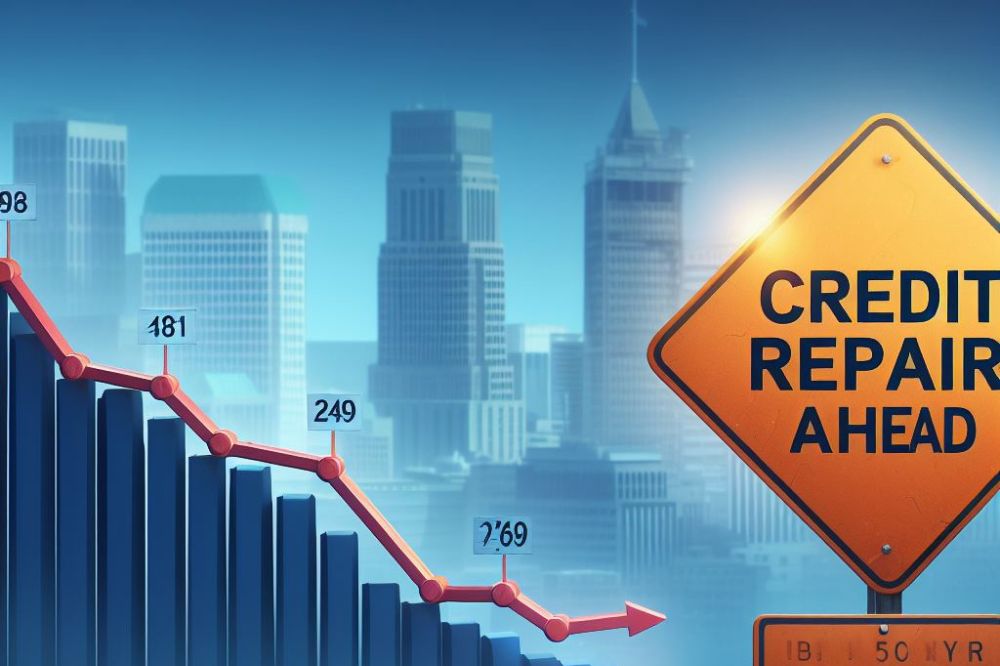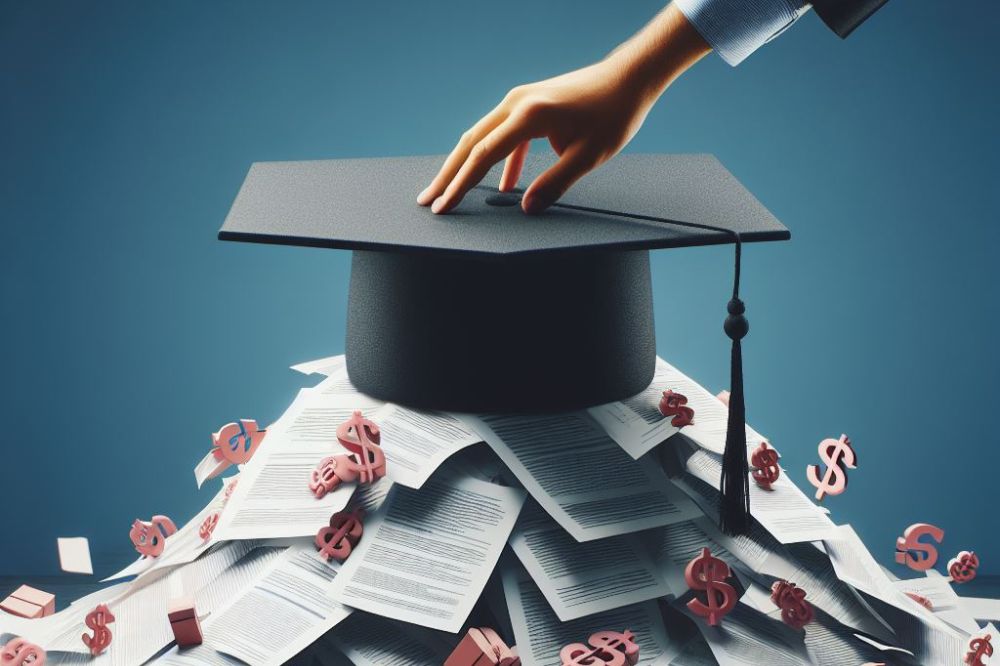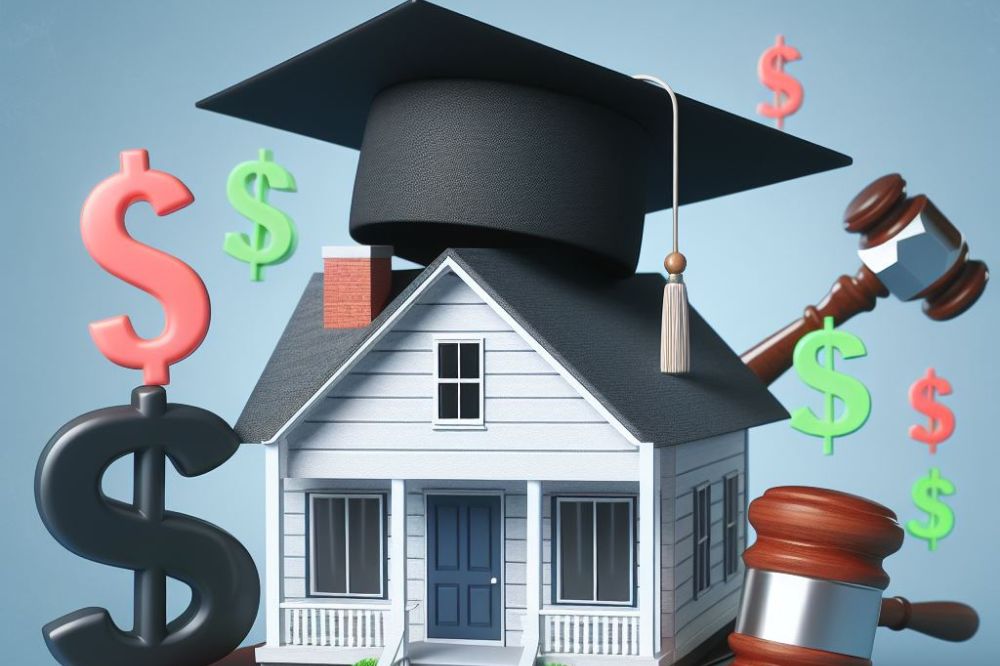Navigating the complexities of discharging student loans through bankruptcy can be daunting. Understanding the historical context can shed light on the evolution of laws governing this process, courts, cases, justice, and changes. Over time, regulations have been refined to address the challenges faced by individuals burdened with overwhelming student debt, financial circumstances, loan discharges, and bankruptcy proceedings. By delving into the historical background, we gain insights into how these laws have adapted to meet changing economic landscapes, societal needs, and government. Exploring the nuances of discharging student loans through bankruptcy allows us to grasp the intricacies involved and make informed decisions regarding financial matters.
Key Takeaways
- Consider Bankruptcy Wisely: Bankruptcy can discharge student loans under specific conditions, but it’s crucial to understand the process thoroughly before proceeding in court.
- Explore Alternatives: Before filing for bankruptcy, explore alternative options like income-driven repayment plans or loan forgiveness programs.
- Know the Hardship Tests: Familiarize yourself with the hardship tests required to prove that repaying student loans would cause undue hardship in bankruptcy court.
- Differentiate Federal Loans: Understand the distinction between federal and private student loans regarding discharge eligibility in bankruptcy.
- Seek Professional Guidance: Consult with a bankruptcy attorney or financial advisor to navigate the complexities of discharging student loans through bankruptcy effectively, especially in an adversary proceeding.
- Stay Informed: Keep abreast of updates and changes in bankruptcy laws that may impact the discharge of student loans.
Understanding Bankruptcy
Chapter 7 Overview
Chapter 7 bankruptcy involves a complete liquidation of assets to pay off debts. The process typically lasts around three to six months. Individuals must meet specific income requirements to qualify.
This type of bankruptcy is known as a “liquidation bankruptcy” where non-exempt assets are sold to repay creditors. Eligibility is determined by the means test, evaluating income and expenses.
Chapter 13 Insights
Chapter 13 bankruptcy, also called a “reorganization bankruptcy,” allows individuals to create a repayment plan spanning three to five years. It enables debtors to keep their assets while repaying creditors.
In Chapter 13, debtors propose a repayment plan that details how they will pay off their debts over time. This chapter is suitable for individuals with a regular income who can afford monthly payments.
Filing Basics
To file for bankruptcy, individuals must first complete credit counseling from an approved agency within six months before filing. They need to gather financial documents such as tax returns, pay stubs, and bank statements.
Accurate documentation is crucial when filing for bankruptcy. Any inaccuracies or missing information can lead to delays or even dismissal of the case. It’s essential to provide all required information truthfully.
Student Loans and Bankruptcy
Discharge Process
Discharging student loans through bankruptcy involves proving undue hardship in court. To succeed, debtors must meet strict conditions. The court plays a crucial role in overseeing the discharge process.
Adversary Proceeding
Chapter 7 Timing
Chapter 7 bankruptcy typically lasts around three to six months. Debt discharge occurs towards the end of the process. Factors like case complexity can affect the timing.
Chapter 13 Timing
Chapter 13 bankruptcy lasts three to five years, allowing debtors to repay creditors. Key milestones include creating a repayment plan and making regular payments over time.
Undue Hardship
Totality Test
The totality test assesses various factors to determine undue hardship for student loan discharge. Factors considered include income, expenses, and future financial prospects.
Federal Loans Consideration
Federal loans receive different treatment in bankruptcy compared to private loans. Options for federal loan discharge may include income-driven repayment plans or loan forgiveness programs. Understanding these differences is crucial for borrowers seeking relief.
Steps to File
Preparing Documents
When filing for bankruptcy, gather essential documents like income statements, tax returns, and debt information. Organize paperwork neatly to expedite the process and ensure all required documents are readily accessible. Accurate documentation is crucial for a successful bankruptcy filing, helping to avoid delays or complications.
Legal Counseling
Legal counsel plays a vital role in navigating the complexities of bankruptcy laws and procedures. Consulting a bankruptcy attorney can provide expert guidance on the best course of action for discharging student loans. Resources such as legal aid societies or bar associations can assist in finding affordable legal assistance.
Court Filing
Filing for bankruptcy involves submitting paperwork to the court that outlines your financial situation. Required forms typically include a petition, schedules of assets and liabilities, income and expenses, and a statement of financial affairs. It is essential to file accurately and on time to comply with legal requirements and prevent potential dismissal.
Key Takeaways
Essential Points
Understanding the process of discharging student loans through bankruptcy is crucial. It involves a legal procedure that can provide relief to individuals overwhelmed by debt. Bankruptcy is not a simple solution but rather a complex process that requires careful consideration.
One common misconception about bankruptcy is that it will erase all debts, including student loans. However, student loans are typically not dischargeable in bankruptcy unless the debtor can prove undue hardship. It’s essential to consult with a legal professional to understand the options available.
It is important to recognize that bankruptcy should be seen as a last resort when dealing with overwhelming debt. Seeking advice from a financial advisor or credit counselor can help explore alternative solutions before considering bankruptcy. Understanding the implications and consequences of bankruptcy is crucial before proceeding with the process.
Legal Outcomes
Filing for bankruptcy can have various legal outcomes, depending on the type of bankruptcy filed and individual circumstances. Chapter 7 bankruptcy involves liquidating assets to pay off debts, while Chapter 13 bankruptcy involves creating a repayment plan over several years.
Creditors may experience losses when an individual files for bankruptcy, as their outstanding debts may not be fully repaid. Bankruptcy proceedings prioritize certain types of debts over others, which can impact creditors differently based on the nature of the debt owed.
The decision to file for bankruptcy can have long-term consequences on an individual’s financial future. It may affect their ability to obtain credit, secure loans, or make significant financial decisions for several years. Understanding these implications is crucial when considering bankruptcy as an option.
Alternatives to Bankruptcy
Federal Relief Programs
Federal relief programs offer specialized assistance for individuals struggling with student loan debt. These programs, such as Income-Driven Repayment Plans, provide financial support based on the borrower’s income and family size. By participating in these programs, individuals can reduce their monthly payments to a manageable level.
Federal relief programs have specific eligibility criteria that borrowers must meet to qualify for assistance. Typically, applicants must demonstrate financial need and provide documentation supporting their income and expenses. Some programs require borrowers to have certain types of federal student loans to be eligible for relief.
Participating in federal relief programs offers several benefits for borrowers. These programs can help individuals avoid defaulting on their loans by providing alternative repayment options. Moreover, borrowers may qualify for loan forgiveness after making consistent payments over a specified period. Overall, these programs aim to alleviate the financial burden of student loan debt for eligible individuals.
Debt Forgiveness
Debt forgiveness in bankruptcy involves the cancellation of all or part of a borrower’s outstanding student loan debt. This process provides individuals with an opportunity to start fresh financially by eliminating their debt obligations. However, it is essential to note that not all types of student loans are eligible for forgiveness through bankruptcy.
When a borrower’s student loan debt is forgiven through bankruptcy, it can have both positive and negative effects on their credit score. While the forgiven debt may no longer appear as an outstanding obligation on the borrower’s credit report, the bankruptcy itself can negatively impact their creditworthiness. It is crucial for individuals considering debt forgiveness to weigh these factors carefully.
The implications of debt forgiveness on future loans can vary depending on the lender’s policies and the individual’s overall financial situation. Some lenders may view past bankruptcy and debt forgiveness as red flags when assessing creditworthiness, potentially affecting future loan approvals and interest rates. Therefore, it is essential for borrowers to understand how debt forgiveness may impact their ability to secure financing in the future.

Hardship Tests Explained
Circumstances Test
The circumstances test in bankruptcy evaluates the borrower’s situation to determine if repaying student loans would cause undue hardship. It assesses factors like income, expenses, and future financial prospects. Meeting this test is crucial for loan discharge eligibility.
In bankruptcy, the circumstances test considers various scenarios to determine if a borrower faces significant financial challenges that prevent them from repaying their student loans. For instance, a person with a permanent disability that hinders their ability to work may meet this test. Another example is someone facing long-term unemployment despite diligent job search efforts.
Hardship Criteria
The hardship criteria for loan discharge involves evaluating the borrower’s financial situation to assess if repaying the debt would lead to undue hardship. Financial hardship is typically measured by comparing income against necessary living expenses. If repaying the loan would leave the borrower unable to maintain a basic standard of living, they may qualify for discharge.
Financial hardship is evaluated based on various factors such as income level, monthly expenses, and any extenuating circumstances affecting the borrower’s ability to repay their student loans. For example, a sudden medical emergency resulting in high medical bills could be considered a valid reason for meeting the hardship criteria. Similarly, a significant decrease in income due to unforeseen circumstances like job loss may also qualify as financial hardship.
Federal Loans vs. Bankruptcy
Discharge Criteria
Discharging student loans through bankruptcy involves strict criteria that borrowers must meet to qualify. To discharge federal student loans, borrowers must prove undue hardship. This requires demonstrating that repayment would impose an undue financial burden, making it impossible to maintain a minimal standard of living. The burden of proof lies with the borrower, necessitating substantial evidence and documentation.
Repayment Plans
Bankruptcy offers various repayment plans for managing student loan debt. These plans provide flexibility in repaying loans based on the borrower’s financial situation. Chapter 13 bankruptcy allows for a structured repayment plan over three to five years, ensuring affordable monthly payments. In contrast, Chapter 7 bankruptcy may eliminate some debts entirely, providing relief from overwhelming financial burdens. When choosing a repayment plan, borrowers should consider factors such as income stability and long-term financial goals.
Common Questions Addressed
Loan Discharge Eligibility
Determining loan discharge eligibility involves several factors. Federal student loans are typically challenging to discharge in bankruptcy. To qualify for a discharge, borrowers must prove undue hardship or that repayment would cause significant financial strain. Meeting specific criteria, such as demonstrating persistent financial struggles, is crucial.
Factors influencing loan discharge eligibility include the type of loan, the borrower’s income, and their ability to maintain a minimal standard of living while repaying the debt. Private student loans are generally easier to discharge compared to federal loans due to fewer restrictions. Understanding these distinctions is vital when considering bankruptcy as an option.
To determine if loans are eligible for discharge, individuals should consult with a bankruptcy attorney specializing in student loan debt. These professionals can assess the borrower’s unique situation and provide guidance on the best course of action. Seeking expert advice early in the process can help navigate the complexities of discharging student loans effectively.
Impact on Credit Score
Bankruptcy has a substantial impact on credit scores, leading to a significant decrease in creditworthiness. A bankruptcy filing can stay on a credit report for up to ten years, affecting the individual’s ability to secure new credit or loans during this period. Rebuilding credit post-bankruptcy requires patience and strategic financial planning.
The long-term impact on creditworthiness extends beyond obtaining new credit. It can affect various aspects of one’s financial life, such as securing favorable interest rates on mortgages or car loans. Rebuilding credit after bankruptcy involves establishing responsible financial habits, such as making timely payments and keeping credit card balances low.
Tips for rebuilding credit after bankruptcy include monitoring credit reports regularly, disputing any inaccuracies, and applying for secured credit cards or small loans to demonstrate responsible borrowing behavior. Over time, consistent efforts towards improving credit can lead to gradual increases in credit scores and enhanced financial opportunities.

The Bottom Line on Bankruptcy
Final Thoughts
Navigating bankruptcy can be daunting, but understanding the process is crucial for financial recovery. Seeking guidance from consumer bankruptcy attorneys is essential. Informed decision-making is key to a successful bankruptcy case.
Considering bankruptcy as an option requires careful consideration and expert advice. Bankruptcy proceedings can be complex, so having a knowledgeable bankruptcy attorney by your side is invaluable. Making well-informed decisions throughout the bankruptcy case is vital for a favorable outcome.
Moving Forward
After completing a bankruptcy process, it’s important to focus on rebuilding financially. Start by creating a post-bankruptcy plan with clear financial goals. Seek assistance from financial advisors to develop strategies for financial recovery.
One crucial step after bankruptcy is to establish a budget and stick to it diligently. Creating an emergency fund can provide a safety net in unforeseen circumstances. Explore avenues to rebuild credit slowly and steadily post-bankruptcy.
Planning for a stable financial future involves setting realistic financial goals and working towards them consistently. Prioritize saving money and cutting unnecessary expenses to secure your financial stability long-term. Remember, seeking professional advice can help navigate the complexities of post-bankruptcy finances effectively.
Final Remarks
You’ve now grasped the intricate relationship between student loans and bankruptcy, understanding the nuances of discharging debt. By following the steps outlined and considering alternatives to bankruptcy, you can navigate this challenging terrain with confidence. Remember, hardship tests are pivotal in this process, especially when distinguishing between federal loans and other forms of debt. The key takeaways emphasize the importance of informed decision-making when facing financial hardship.
In conclusion, your knowledge about discharging student loans through bankruptcy has expanded significantly. Take action by exploring the options presented here and seek professional advice if needed. Making informed choices now can pave the way for a more stable financial future. Keep educating yourself and stay proactive in managing your financial well-being.
Frequently Asked Questions
Can student loans be discharged through bankruptcy?
Yes, student loans can be discharged through bankruptcy, but it is challenging. You need to prove undue hardship in a separate court proceeding.
What are the key differences between federal and private student loans in bankruptcy?
Federal student loans have more options for relief compared to private loans. Federal loans may qualify for income-driven repayment plans or loan forgiveness programs.
How can someone determine if they pass the hardship test for discharging student loans in bankruptcy?
To pass the hardship test, you must demonstrate that paying your student loans would prevent you from maintaining a minimal standard of living based on specific criteria set by the court.
Are there alternatives to filing for bankruptcy to deal with overwhelming student loan debt?
Yes, alternatives include income-driven repayment plans, loan consolidation, loan forgiveness programs, or negotiating directly with your loan servicer.
What should someone consider before deciding to file for bankruptcy regarding their student loans?
Consider exploring all available options first, understanding the impact on credit score and financial future, and consulting with a bankruptcy attorney specializing in student loan cases.




